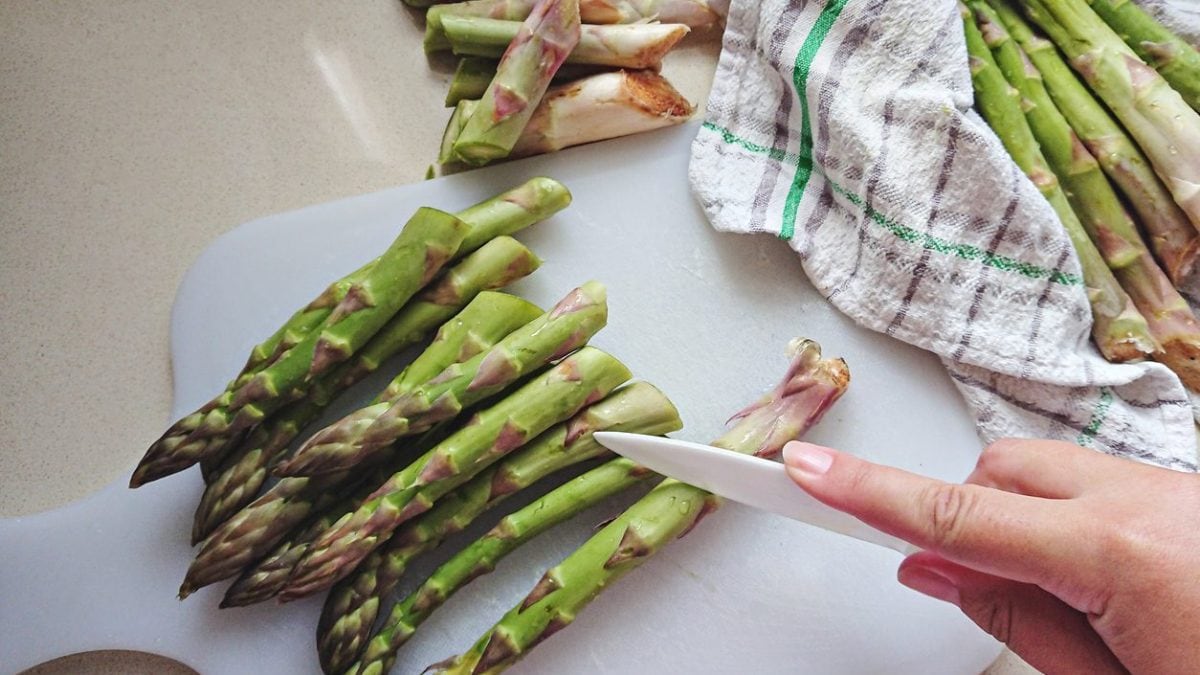
Asparagus is one of the undisputed stars of spring, available from March to June. It is a vegetable rich in water, fiber, vitamins (especially C), mineral salts (potassium) and folates , known above all for its diuretic and purifying properties. In the kitchen, then, it is very versatile: you can use it to prepare easy and creative appetizers (try them wrapped in puff pastry), tasty main dishes (from risotto to lasagna) and delicious side dishes, as an accompaniment to eggs, a great classic, but also to meat, cured meats, fish and cheeses.
In short, a passepartout ingredient of which there are many varieties, each with its own characteristics: on the market we mainly find green asparagus, the most common, with a herbaceous taste, then there is the white, more delicate, the violet, soft and buttery, unique in the world, and the wild one, thinner and with a slightly bitter taste. When buying, make sure they are fresh, with the tips intact and closed and the stems turgid and free of darker spots. All that remains is to see how to clean them and use them best in the various preparations.
How to Clean Asparagus
Treating asparagus before using it in different recipes is simple. The procedure to follow is a general rule for the different types: the peeling phase of the stem is omitted in wild asparagus, because it is tender, and can also be skipped in other cases if the external part is not particularly tough.
- First, if present, remove the rubber bands that hold the bunches together, being careful not to damage the tips, which are the most fragile part of the vegetable, and wash under running water to eliminate any traces of soil. Dry with a kitchen towel.
- Remove the final part of the stem, which is usually lighter and harder: you can cut it with a knife, or by breaking the asparagus with your hands at the point where it naturally bends, holding it by the ends.
- Using a potato peeler or knife, remove the toughest, stringy outer skin. Rinse the asparagus: they are ready to be cooked.
Tips on How to Cook Asparagus
Asparagus has the advantage of being able to be brought to the table in many ways, enhancing its benefits, taste, color and consistency. The suggestion is to never overcook it, both to preserve the nutritional values and the texture, very pleasant when it remains “crunchy” on the palate.
Steam Cooking
A delicate method that allows the vegetable to retain its properties and organoleptic characteristics. Place the asparagus in the basket, cover with the lid and cook for 7 to 12 minutes, depending on the size and toughness of the vegetables. Check the cooking with a fork: they should be tender, but still firm.
Boiled
This is one of the most traditional methods, as there is a special pot called an asparagus pot: tall and narrow, it allows you to cook the stalks immersed in boiling salted water, leaving the tips out, so as not to ruin them (the heat of the steam released will cook them). Alternatively, you can use a normal pot, paying attention to the tips, which risk flaking. In both cases, calculate a time of around 10 minutes.
On the Griddle
After cleaning them, leave the asparagus still moist and prepare an emulsion made with extra virgin olive oil, salt, pepper and, to taste, aromatic herbs and lemon juice. Brush the vegetables and arrange them side by side on the very hot cast iron plate, cooking on both sides for a total of 4-6 minutes. Roasted like this, they are perfect to be accompanied by sauces, such as hollandaise.
In the Oven
Baked asparagus lends itself to becoming very tasty dishes. Given the high temperatures, cooking is short and to prevent the asparagus from drying out, combine it with ingredients that allow it to retain moisture. For example, the vegetable can be wrapped in bacon , or au gratin with oil, parmesan and breadcrumbs or with béchamel sauce.
Over the Skillet
Whole, in pieces or in rounds, cooking asparagus in a pan is very simple. With a base of oil or butter they are left to soften, to then be served as a side dish or as an ingredient in risottos, pasta dishes, omelettes, savory pies. To add flavor you can moisten them with vegetable broth, let them evaporate with white wine or make a soffritto with onion or shallot.
How to Store Them
Raw asparagus left at room temperature with the stems in water lasts a day, while they can be kept for up to 4 days in the refrigerator wrapped in a damp cloth and stored in the fruit and vegetable drawer. Once cooked, it is best to consume them quickly: if you have any left over, close them in an airtight container and put them in the refrigerator for no more than 2 days. The freezer can also prove to be an ally, dividing them both raw and lightly blanched into portioned freezer bags, so as to defrost only what you need: they last from 4 to 5 months.
;Resize,width=767;)
